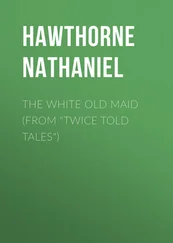As the inquiry developed, I increasingly found myself thinking with another term, not unrelated to ‘interface’ and ‘software’ or the other terms mentioned, but one that seems untroubled by the dashboard’s peculiar history or by the fact that dashboards can be comprised of radically different configurations of technology. More importantly, the term more strongly connotes what it is a dashboard does. Whatever else a dashboard is, I want to suggest it is a format. A dashboard is a format and the work it does is one of formatting.
What is a format? My understanding of format draws on three of its most common definitions:
1 the way in which something is arranged or set out;
2 the shape, size and presentation of a book or periodical;
3 computing: a defined structure for the processing, storage or display of data. 21
A format is an arrangement, a way of arranging things. This arrangement includes shape, size and presentation, though (in our case) not limited to print media, and involves the processing, storage and display of data. While the third definition of ‘format’ also comes about with the rise of computation (like ‘software’ and ‘interface’), the other two definitions predate this one and together already contain much of the specificity I am looking for. Etymologically, ‘format’ comes from the Latin formatus , a past participle of formare (‘to form’). In book publishing, it originally referred to the size of a book (folio, quarto, octavo) and the ‘leaf’ folding and print strategies required for each size. 22While acknowledging this historical specificity, I will use this notion of format to approach the dashboard, and thus my emphasis is on the arrangement of elements (including size, shape, presentation and more) and the structuring of data through processing, storage and display, with a particular focus on display. I favour the use of ‘format’ over that of ‘medium’, ‘interface’ or ‘software’ because I want to highlight these questions of arrangement, presentation, structure and display.
A format is distinct from the medium, software, interface or other technology that realizes it. While some formats are limited to a particular medium, many even proprietary formats are compatible with different medial configurations. Common digital text formats such as .docx (Microsoft Word Open XML format) or .pdf (Portable Document Format), for example, can be read by many different kinds of software and their files ‘opened’ on different operating systems and devices. A format is thus dependent on some configuration of media elements, but it is not reducible to these elements. A format is ‘medium agnostic’. 23To focus on formats thus opens onto different historical trajectories where the advance of specific technologies need not take priority. That is, the history of a format is distinct from that of any particular medium. It may for a period run in parallel to the development of a medium – and we will observe this with cars and computers – but the format may just as well part ways with one medium and take up with another or persist across different configurations simultaneously.
This understanding of format (as distinct from medium) is in part indebted to Jonathan Sterne’s excellent work on the MP3 format, where he similarly writes that ‘some formats may offer completely different inroads into media history and may well show us subterranean connections among media that we previously thought separate’. 24Indeed, while ostensibly a book about the MP3 format, Sterne’s study opens onto a much longer history of sound compression and perceptual technics from which the MP3 format becomes possible as both cultural and technical artefact. In the pages that follow, I too give a lot of space over to historical discussion, to what I call format archaeology , charting a course across technological hosts of the dashboard format in different times and places.
Further commenting on the relationship between format and medium, Sterne writes, ‘ Format denotes a whole range of decisions that affect the look, feel, experience, and workings of a medium’, and adds ‘it names a set of rules according to which a technology can operate’. 25He thus raises questions regarding the dependency of media on formats and wants to highlight their aesthetic, phenomenological and functional importance. Sterne’s ‘format theory’, as an alternative to established ‘media theory’ (and the other terms mentioned above), has been very helpful in thinking about dashboards for these reasons. However, my usage diverges in a number of ways and contains a number of different emphases. The object of Sterne’s analysis, the MP3 format, is much more strictly codified. It is a format to be read by software. Thus, when he writes about format as a set of rules for which a technology can operate, he means this in a rather strict sense as code. In this way, his working definition runs very close to the third definition given above, where format relates to computers and specifically to the storage and processing of (sound as) data. However, Sterne is also clearly drawing on yet another definition of format relating specifically to sound, which I did not include in the initial three common definitions: ‘the medium in which a sound recording is made available’. 26Obviously, this definition further muddies the waters regarding format and medium, but it clearly informs Sterne’s work, concerned as it is with sound. While Sterne’s ‘format theory’ is a conceptual elaboration on this (fourth) definition of format, my own account draws more on the other three and especially the first, most general one: ‘the way in which something is arranged or set out’.
As software, a dashboard may very well contain coded elements, but the notion of format that informs this study (that is, the dashboard as format) is generally looser, as likely to be a matter of interpretation as of technical rules for operation. As format, a dashboard is a way of arranging or setting things out. Exactly what is arranged, how and for what purpose changes over time. The development of a format weaves a history across different technologies (horse and carriage, car, reports, computer systems, among others); some elements of the arrangement persist, either in terms of function or connoting a ‘look, feel [or] experience’, while others fall away.
Format also has an interesting ontological status, seemingly as a thing in itself and as a kind of container for other things, which, when formatted, take on specific qualities yet without losing their prior identity. To put it another way, the same thing can be formatted differently. Data can be formatted in different ways, in a table, in a graph, scribbled in a field diary or displayed on a giant sports scoreboard, without losing their status as data. And yet, the format is not without ontological and epistemological influence. In fact, I hope to convince the reader that format matters deeply with regard to these things. Understanding how the dashboard as a format, through its arrangements and set-ups, its presentations and displays, works over the data that pass through it and in doing so constitute it, underpins much of this inquiry.
This ontological blurring resulting from the dynamic interplay between data and format is partly captured in how ‘format’ acts as both noun and verb. A dashboard is a format, but one can also format data into a dashboard. As a verb, ‘format’ suggests an active reworking, a transition in state; it is the work required in order for ‘format’ to function effectively as a noun. As a rule, there is no format without a priori formatting. This book takes a strong interest in the formatting of data through dashboards, but other formatting work is also going on. The dashboard is layered with perceptual orientations, cultural significations and epistemological qualities that format not only the data and elements that pass through it, but also the bodies and organizations that make use of it. How far one can stretch the notion of formatting beyond a direct encounter with a format and what kind of force one can grant it once placed alongside competing forces – however conceived – are empirical questions that I wish to explore but do not expect to resolve. This bidirectionality of formatting, such that what is formatted is not only data but also the people, things and situations within which a format is at work, brings us close to the use of the term by Bruno Latour and Michel Callon.
Читать дальше


![Элизабет Ленхард - Свидание со смертью[Date With Death]](/books/79651/elizabet-lenhard-svidanie-so-smertyu-date-with-dea-thumb.webp)









